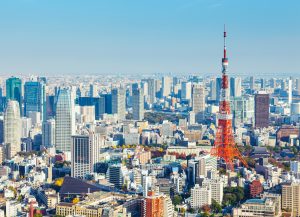Earlier this month Japan lifted its entry restrictions to allow technical interns, foreign students and short term business people to enter the country after closing its borders to almost all non-Japanese citizens following the outbreak of COVID-19. It was a welcome announcement for many people abroad, waiting in limbo for almost 18 months to start working or studying in Japan. But the new border rules have been a disappointment with complicated paperwork causing headaches for sponsoring organizations in Japan.
With more than 70 percent of the population fully vaccinated, the new border policy allows quarantine to be shortened from 10 days to three days. But the biggest obstacle facing host organizations is the document submission process. New visa holders entering Japan are required to have a designated representative from the host company take charge of a person’s coronavirus countermeasures. The three-day quarantine requires a total of six documents to be submitted in advance by the host company, including proof of vaccination, a negative COVID-19 test upon arrival, an activity plan covering four to 10 days and a written pledge guaranteeing that the person entering Japan is not carrying COVID-19. Lastly, final approval is needed by the appropriate ministry. However, different ministries are in charge of different applications depending on the business category.
Until the end of September people returning to Japan from overseas were required to be quarantined for 14 days at home. After October, quarantine was shortened to 10 days based on a negative PCR test on the 10th day. People returning to Japan are not permitted to take public transport from the airport. The new border measures require a designated representative to pick up incoming students or business travelers from the airport and accompany them to their predetermined accommodation.
The Japanese government’s cautious reopening was not what many had hoped for. The business community aimed for a shorter quarantine to encourage productive international business trips. The Keidanren, also known as the Japanese Business Federation, have been lobbying the government to balance coronavirus countermeasures with resuming international business. They had recommended the removal of compulsory quarantine with proof of vaccination. The new complex visa procedures have been criticized as unnecessary and as discouraging sponsoring companies from submitting paperwork for shorter quarantine.
Japan also aims to increase the number of daily arrivals from the current 3,500 to 5,000 starting Friday. But with some 370,000 foreign residents waiting to re-enter Japan from abroad, the new cap will still leave many stuck on a long waiting list.
Foreigner residents have borne the brunt of Japan’s unpredictable border restrictions, which tightened in response to the spread of highly contagious variants. Although the number of COVID-19 cases in Tokyo has reached its lowest level since the pandemic began, the resurgence of COVID-19 in Europe and parts of Asia where vaccines are widely available serve as bleak warning of what may lie ahead during the holiday season. Japan’s coronavirus peaks have generally followed a month or two behind Europe and the latest easing of border restrictions may be short-lived if new arrivals begin to test positive at immigration.
The first wave of coronavirus in Japan was triggered by imported cases from Europe and the United States. In an effort to stop the spread of the coronavirus, the Abe administration closed the border to all travelers on April 3, 2020 which left many residents, including those with permanent residence status, locked out of the country and many non-Japanese residents stuck in Japan unable to visit home in fear of being unable to re-enter Japan.
Anti-virus entry restrictions have varied from country to country in response to the pandemic situation at the point of departure. In late December last year, the foreign residents departing from the U.K. and South Africa were barred from entering Japan after several residents arriving in Japan tested positive for the alpha and beta variants. In April this year the spread of the highly contagious Delta variant led to foreign residents visiting South Asian countries such as India and Bangladesh barred from re-entering Japan.
Just before the pandemic surfaced, Japan was a tourist hotspot and its airports hives of activity. In January 2020 over 4 million people entered Japan. However that number fell to just under 66,000 in September last year.

































